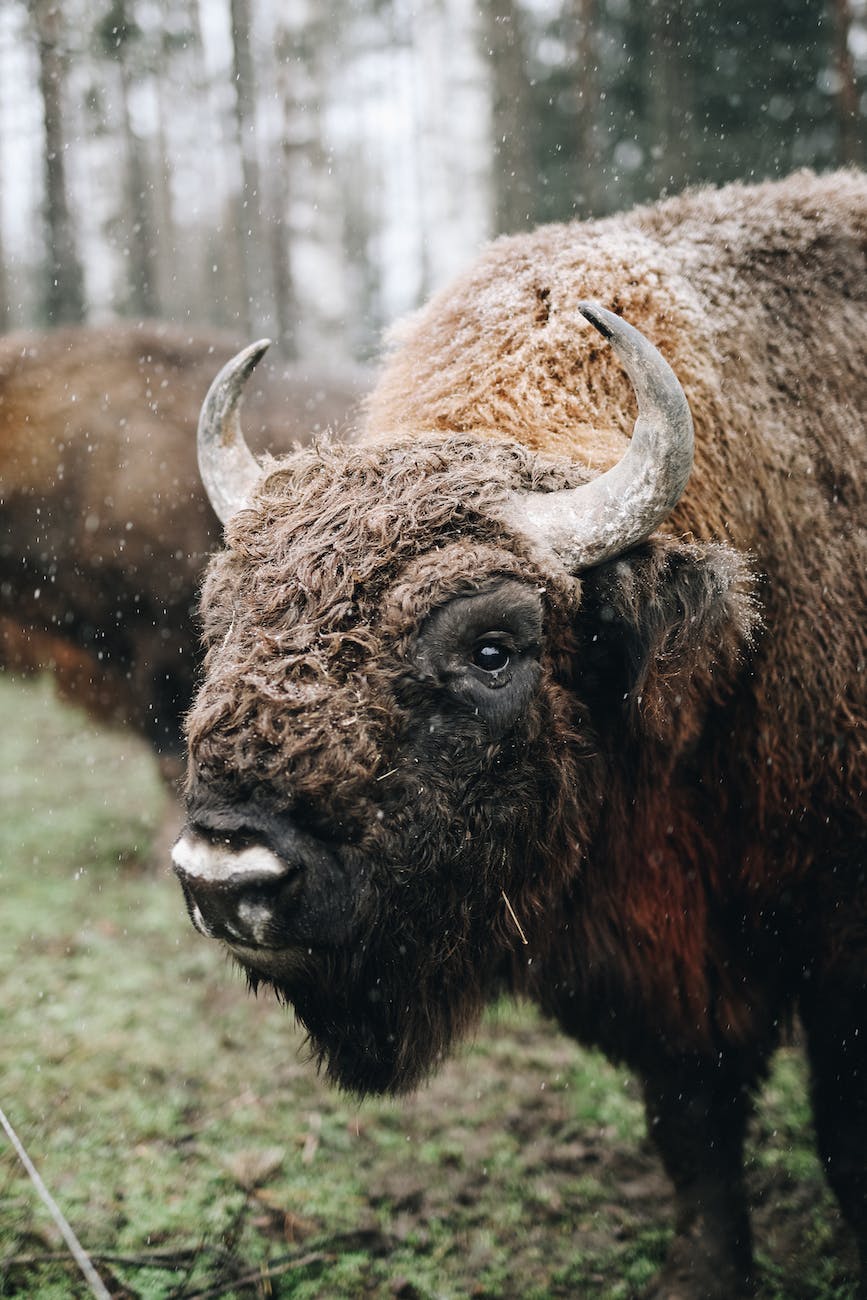The bison industry is carving a unique niche within the agricultural market, emerging as a lucrative alternative to traditional livestock. Known for their robustness and the nutritional superiority of their meat, bison are becoming a focal point for producers looking to diversify their operations. This blog post delves into the import and export statistics of bison, underscoring their growing significance as a valuable livestock commodity.
Nutritional and Environmental Benefits
Bison meat stands out for its health benefits, boasting lower fat and cholesterol levels compared to conventional beef. This has led to increased consumer demand, particularly among health-conscious individuals seeking alternative protein sources. Additionally, bison and cattle grazing contribute significantly to the health of grassland ecosystems, promoting biodiversity and sustainable agricultural practices.
Market Opportunities
The bison market spans live animal sales, meat, and value-added products such as jerky, pet food, and hides. There’s also a niche market for bison-based tourism, offering educational and interactive experiences. Unlike traditional cattle operations, bison farming requires sturdier facilities due to the animals’ strength and size, but they can be raised on similar pastures, often leading to more efficient land use and higher revenue potential.
Producers market bison meat directly to wholesalers, restaurants, and consumers, capitalizing on the growing demand for meat produced without hormones or antibiotics. The direct-marketing approach has proven effective, allowing producers to tap into niche markets and establish premium pricing.
Import and Export Dynamics
The United States and Canada are major players in the bison industry, with both countries participating actively in the trade of live animals and meat products.
The import and export statistics for bison show a significant increase in live bison exports over the past years. In 2022, live bison exports reached 32,362 heads, marking an 86.6% increase from 2018. Canadian bison imports were slightly higher, with actual slaughter numbers showing a 37% increase compared to December totals. The National Bison Association reports that approximately 80,000 bison were harvested in the U.S. in 2023, with state-inspected slaughter contributing around 20% to the total number of bison harvested. The bison industry involves various products such as meat, hides, and value-added items like jerky and pet food, contributing to a growing market for bison products.
The largest importers of bison meat include countries like the Netherlands, Italy, France, and Switzerland within the European Union. The European Union has become the top destination for Canadian bison meat, with the Netherlands, Italy, and France being the top three importers. These countries have shown a growing demand for bison meat due to its nutritional value and appeal as a sustainable and healthy meat product. Additionally, the United States continues to be a significant market for bison exports, receiving all live bison exports and a considerable portion of bison meat exports from Canada.
As consumer preferences continue to evolve, the demand for bison meat and products is expected to rise, potentially leading to increased international trade. Export markets for bison products are expanding, particularly in regions where consumers are seeking healthier and more sustainable meat options.
Challenges and Considerations
Transitioning from traditional cattle to bison production requires careful consideration. Producers must invest in stronger infrastructure and adapt their management practices to accommodate the unique needs of bison. However, the potential for higher revenue and the growing demand for bison products can offset these initial challenges.
Furthermore, as the bison industry grows, it will be essential to maintain sustainable farming practices to ensure the long-term health of bison populations and grassland ecosystems. The industry’s commitment to environmental stewardship and animal welfare will play a crucial role in its continued success and public perception.
Conclusion
Bison represent a promising opportunity for livestock producers, offering a combination of economic benefits and environmental sustainability. As the market for bison products continues to expand, producers equipped with the right knowledge and resources can capitalize on this growing trend. The future of the bison industry looks bright, with the potential to reshape perceptions of livestock production and meet the demands of modern consumers seeking healthier, more sustainable meat options.
Citations:
[1] https://www.gov.mb.ca/agriculture/markets-and-statistics/trade-statistics/pubs/bison-market-in-eu.pdf
[2] https://www.ams.usda.gov/mnreports/ams_2827.pdf
[3] https://www.aphis.usda.gov/aphis/ourfocus/animalhealth/monitoring-and-surveillance/nahms/nahms_bison_studies
[4] https://www.nber.org/system/files/working_papers/w12969/w12969.pdf
[5] https://bisoncentral.com/bison-by-the-numbers/
[6] https://oec.world/en/profile/hs/bovine-meat
[7] https://www.ers.usda.gov/webdocs/publications/106277/err-312.pdf?v=6538
[8] https://www.nationmaster.com/nmx/ranking/buffalo-meat-production
[9] https://www.visualcapitalist.com/cp/mapped-meat-consumption-by-country-and-type/


Leave a Reply